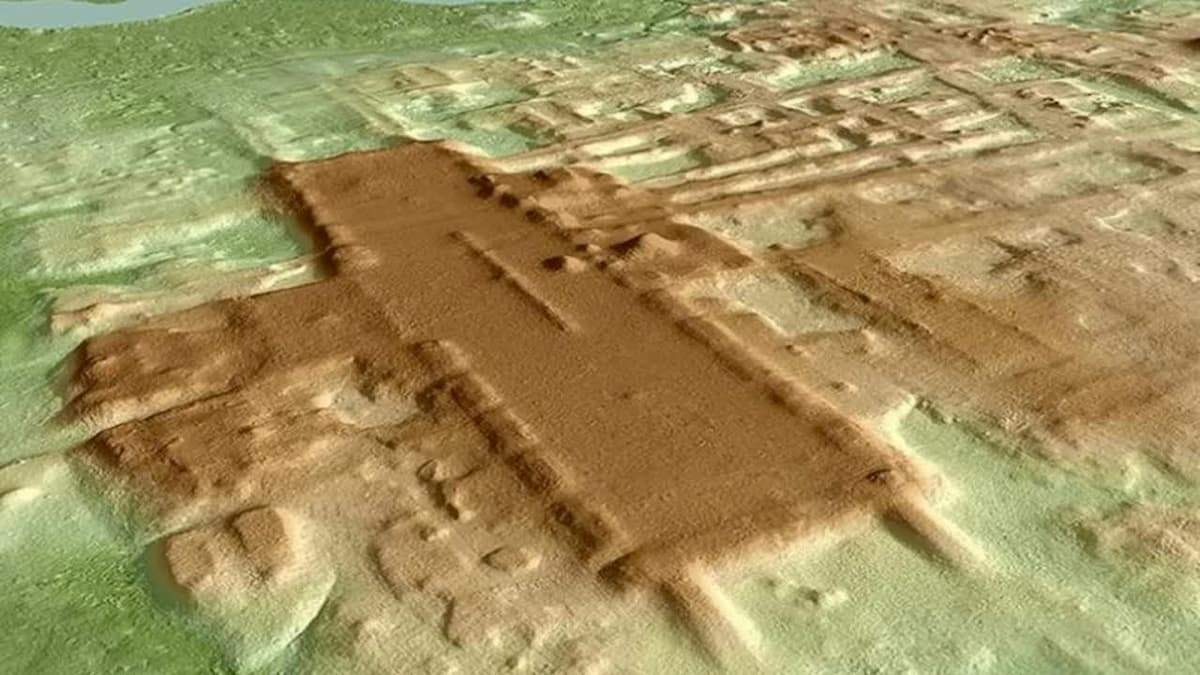Mexico, archaeologists discover what may be the largest Mayan monument ever found
A team of archaeologists from theUniversity of Arizona, led by Professor Takeshi Inomata, has discovered at the site of Aguada Fénix (Tabasco, Mexico) a great monument of the Maya civilization: it is a ceremonial complex dating from the Middle Preclassic period (1000 to 350 B.C.), built on an artificial plateau measuring 1.4 km in length, about 400 in width, and 10 to 15 meters in height, with nine causeways leading up to it. The construction has been dated by scholars to a time between 1,000 and 800 B.C.: it is therefore a 3,000-year-old monument. According to the team, it is the oldest monumental construction ever found in the areas on which the Maya civilization flourished, as well as the largest monument in the pre-Hispanic history of the region. To give a term of comparison, the pyramid of Cheops, the largest Egyptian pyramid, has a base of 230 meters (although it is taller, since the top is 138 meters above the ground).
The discovery came about through the use of a new technology called lidar (Laser Imaging Detection and Ranging), a laser remote sensing system that can reproduce 3-D mapping of surfaces that are hidden by trees and forests. The speed and extent of this detection system enable it to lead in a short time to discoveries that would otherwise take a great deal to emerge. And in the case of the Aguada Fénix site, without lidar, said Takeshi Inomata, perhaps the importance of this place would never have been recognized, or archaeologists would have gotten there but after many years of mapping the terrain.
According to the scholars, this artificial plateau was probably used for ritual purposes, as attested by the devotional objects found at the site (a number of jade axes were found, probably deposited at the site after ceremonies), which suggest that Aguada Fénix may have been the scene of religious processions. “This site,” Inomata told the press, “had not been studied thoroughly because, given its size and shape, it resembled a natural landscape. But with the use of lidar it became clear that it was a structure with a well-planned shape.”
The study by which the archaeologists released their discovery was published two days ago in the prestigious scientific journal Nature. According to Professor Inomata, the discovery has many implications and extends our knowledge of the Maya into unexplored terrain: for example, on the organization of society (in later periods there was a strong division of classes, so there were rulers who ordered the construction of sites: here, however, no signs of the presence of potentates were found, and therefore the construction of the monumental complex could be the work of a community).
Pictured is the reconstruction of the site structure detected with lidar.
 |
| Mexico, archaeologists discover what may be the largest Mayan monument ever found |
Warning: the translation into English of the original Italian article was created using automatic tools. We undertake to review all articles, but we do not guarantee the total absence of inaccuracies in the translation due to the program. You can find the original by clicking on the ITA button. If you find any mistake,please contact us.





























